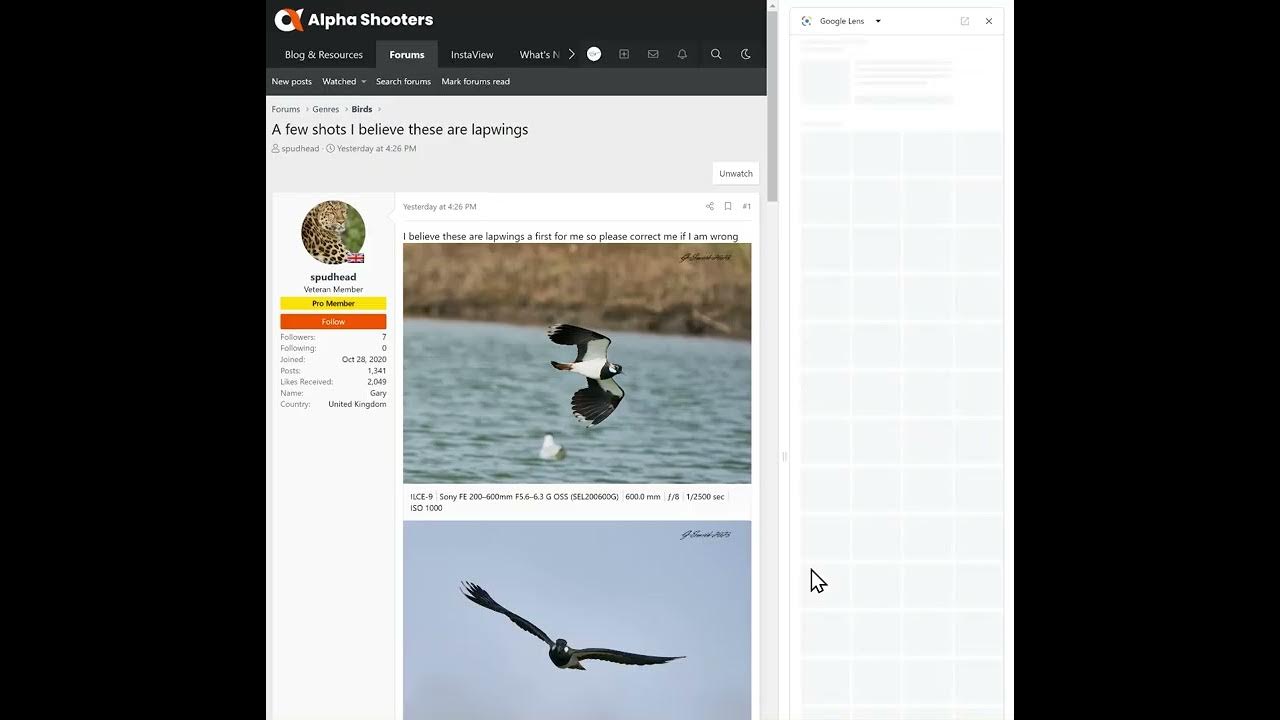-ST-
Well Known Member
- Followers
- 9
- Following
- 6
- Joined
- Jan 19, 2023
- Posts
- 862
- Likes Received
- 2,430
- Name
- ST
- Country
- Canada
- City/State
- British Columbia
- CC Welcome
- Yes
Here's how I want to identify an image I find online. (a couple of quick and dirty videos)
in Google Chrome

 youtu.be
youtu.be
in Microsoft Edge

 youtu.be
youtu.be
Both Google Search and Microsoft Bing Search have visual searches that allow you to drag an image from your hard drive into the search tool.
In Google click the little camera at the right end of the search box.
More details https://support.google.com/websearch/answer/1325808?hl=en&co=GENIE.Platform=Desktop
In Bing Search click the little square with a dot in it, at the right end of the search box.
More details https://www.bing.com/visualsearch
You can also use Merlin for birds, but I find using the visual search method work well for all kinds of things like animals, plants, objects, things you can't figure out by looking, even the location of landscape pictures. You can also find places where your images have been used.
I used the image in Gary's post for the videos. I hope that's okay.
 www.alphashooters.com
www.alphashooters.com
in Google Chrome

Image Search Google
in Microsoft Edge

Image Search Edge
Both Google Search and Microsoft Bing Search have visual searches that allow you to drag an image from your hard drive into the search tool.
In Google click the little camera at the right end of the search box.
More details https://support.google.com/websearch/answer/1325808?hl=en&co=GENIE.Platform=Desktop
In Bing Search click the little square with a dot in it, at the right end of the search box.
More details https://www.bing.com/visualsearch
You can also use Merlin for birds, but I find using the visual search method work well for all kinds of things like animals, plants, objects, things you can't figure out by looking, even the location of landscape pictures. You can also find places where your images have been used.
I used the image in Gary's post for the videos. I hope that's okay.
Birds - A few shots I believe these are lapwings
I believe these are lapwings a first for me so please correct me if I am wrong
Last edited:
